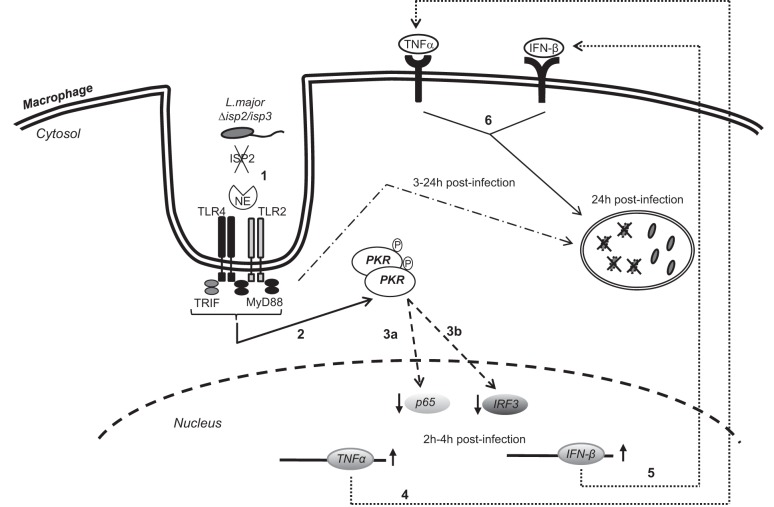Figure 11.
Molecular interactions in macrophages infected with L. major. Contrary to L. amazonensis, PKR activation leads to the killing of L. major, and ISP2 is a factor that prevents PKR activation. In the absence of ISP2, TLR4 and TLR2 are recruited to the site of parasite entry, and proteolytically active NE triggers those receptors (1), leading to the phosphorylation (2). The nuclear levels of the NF-κB subunit p65 (3a) and of interferon regulatory factor 3 (IRF3; (3b) are reduced, in comparison, with macrophages infected with WT L. major. The production of TNF-α (4) and IFNβ (5) is induced, which results in parasite killing (6). Activation of TLRs via MyD88 and TRIF is necessary for the killing of ∼50% of the internalized parasites within 24 h.

